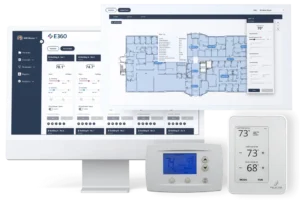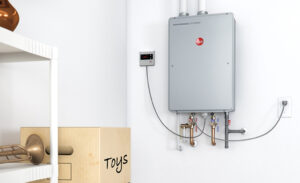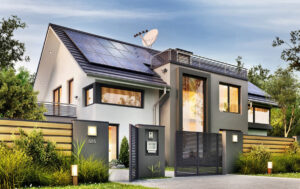Flat roofs have long been admired for their modern aesthetic and practical benefits, offering homeowners a unique and functional alternative to traditional sloped roofs. Once reserved for commercial buildings, flat roofs are now gaining popularity in residential design, thanks to their sleek appearance, accessibility, and versatility. Whether you are looking to replace an old roof, improve your current flat roof, or repair issues that have arisen over time, understanding the essentials of flat roofing and repair can help you make informed decisions about your home. This article explores how to improve your home with a flat roof, including its advantages, common repair concerns, and tips for maintaining and enhancing this architectural feature.
Advantages of Flat Roofs
Before delving into the practical steps for improving or repairing a flat roof, it’s essential to understand why this roofing style is increasingly popular among homeowners. Flat roofs offer a host of benefits that can enhance both the functionality and aesthetic appeal of a property:
-
Maximized Usable Space: One of the most significant advantages of a flat roof is the extra space it provides. Unlike pitched roofs, which often leave attic areas unused, a flat roof offers an accessible, functional surface. You can utilize the space for various purposes, such as creating a rooftop garden, installing solar panels, or even adding an outdoor living area. This makes it particularly appealing for urban homes or properties with limited outdoor space.
-
Contemporary Aesthetic: The minimalist and modern appearance of flat roofs makes them a popular choice for contemporary homes. Their clean lines and geometric shapes can complement the overall design of the house, creating a sleek and stylish look. Flat roofs can also integrate seamlessly with the surrounding architecture, enhancing curb appeal and giving the property a sophisticated edge.
-
Energy Efficiency: Flat roofs, when properly insulated, can provide excellent energy efficiency. They are easier to insulate compared to pitched roofs, helping maintain a consistent internal temperature. Flat roofs can also be equipped with green roofing options, like a living roof or a reflective coating, which can reduce heat absorption and decrease energy consumption during warmer months.
-
Cost-Effectiveness: Flat roofs are often more cost-effective than sloped roofs, both in terms of installation and maintenance. With fewer materials required for construction and labor being simpler due to the roof’s design, flat roofs can be more affordable to install initially. Additionally, because they are easier to access for inspections and repairs, maintenance costs can be lower over time.
Common Issues with Flat Roofs
While flat roofs offer many benefits, they also come with their own set of challenges. Understanding these common issues will help you address them proactively and maintain the longevity of your roof:
-
Water Pooling: One of the primary concerns with flat roofs is the potential for water pooling. Unlike sloped roofs that allow water to naturally run off, flat roofs require a carefully designed drainage system to direct water away from the surface. If water pools on the roof, it can lead to leaks, structural damage, and the deterioration of roofing materials.
-
Punctures and Damage: Flat roofs are typically made from materials like TPO (thermoplastic polyolefin), EPDM (ethylene propylene diene monomer), or modified bitumen, all of which can be vulnerable to punctures or tears. Foot traffic, debris, or sharp objects can cause damage, leading to leaks and moisture infiltration.
-
Roof Membrane Aging: Over time, the membrane of a flat roof can begin to deteriorate due to exposure to UV rays, temperature fluctuations, and harsh weather conditions. A compromised membrane can lead to cracks, blisters, or other signs of wear, allowing water to penetrate the roof and potentially cause structural damage.
-
Improper Installation: Flat roofs require precise installation to function correctly. If the installation process is not handled properly, issues such as poor drainage, insufficient insulation, or weak seams can arise, which may result in long-term damage and costly repairs.
Repairing and Maintaining Your Flat Roof
Improper maintenance or neglecting repairs can significantly shorten the lifespan of your flat roof. Regular upkeep is vital to ensuring that your roof remains in good condition. Here are some strategies for improving your flat roof and addressing common problems:
1. Regular Inspections
Regular inspections are essential for identifying any potential issues early on. It’s a good idea to inspect your flat roof at least once a year, particularly after heavy storms, snowfalls, or other extreme weather conditions. During the inspection, check for signs of water pooling, cracks in the roofing membrane, or any visible damage to flashing, seams, or drains. By catching problems early, you can prevent them from escalating into larger, more expensive repairs.
2. Addressing Water Pooling
Water pooling is one of the most common issues with flat roofs, and it can cause severe damage if left unchecked. To address this, ensure that your roof’s drainage system is functioning properly. Keep gutters and downspouts clear of debris, and make sure that the roof is sloped adequately to encourage water runoff. If pooling persists, it might be necessary to install additional drains or to adjust the slope of the roof to improve water flow.
For areas where water tends to pool, consider using roofing materials with enhanced drainage properties, such as a sloped or tapered insulation system. This can help channel water more effectively and prevent stagnation.
3. Repairing Punctures and Tears
If you notice punctures or tears in the membrane, it’s crucial to address them immediately to prevent water from seeping into the roof structure. Small holes can be repaired with a patch made from the same material as your roof membrane. If you are unsure how to perform the repair, it’s wise to contact a roofing professional. For larger punctures or extensive damage, you may need to replace sections of the membrane entirely.
4. Coating the Roof
Applying a protective coating to your flat roof can significantly extend its lifespan. Reflective coatings, such as acrylic, silicone, or elastomeric coatings, can help reduce UV damage, prevent leaks, and enhance the roof’s energy efficiency. These coatings create a seamless, watertight surface that can protect your roof from the elements, making it more resilient to wear and tear. Be sure to apply the coating during a dry season when temperatures are stable to ensure the best results.
5. Upgrading Insulation
Improper insulation can lead to energy loss, condensation, and moisture buildup within your flat roof system. If you notice that your home is experiencing temperature fluctuations or excess moisture in the attic, it may be time to upgrade your roof’s insulation. Adding a high-quality insulation layer can improve energy efficiency, reduce the risk of condensation, and enhance the roof’s overall durability.
6. Consulting a Professional
While DIY repairs can sometimes be effective for minor issues, flat roofs require specialized knowledge and skills for optimal repair and maintenance. Consulting a professional roofing contractor with experience in flat roofs is crucial for addressing complex issues or undertaking significant repairs. An expert will not only provide quality workmanship but can also offer tailored advice on the best materials and solutions for your specific roofing needs.
Conclusion
Improving and maintaining a flat roof requires careful attention, timely repairs, and regular upkeep. With the right strategies, a flat roof can add modern flair to your home while providing valuable functional benefits. By addressing common issues such as water pooling, punctures, and membrane aging, you can ensure that your flat roof continues to protect your home for years to come. Whether you’re looking to repair existing damage or enhance your roof with a reflective coating or additional insulation, taking a proactive approach to maintenance will ultimately help you get the most out of your flat roofing system.
















